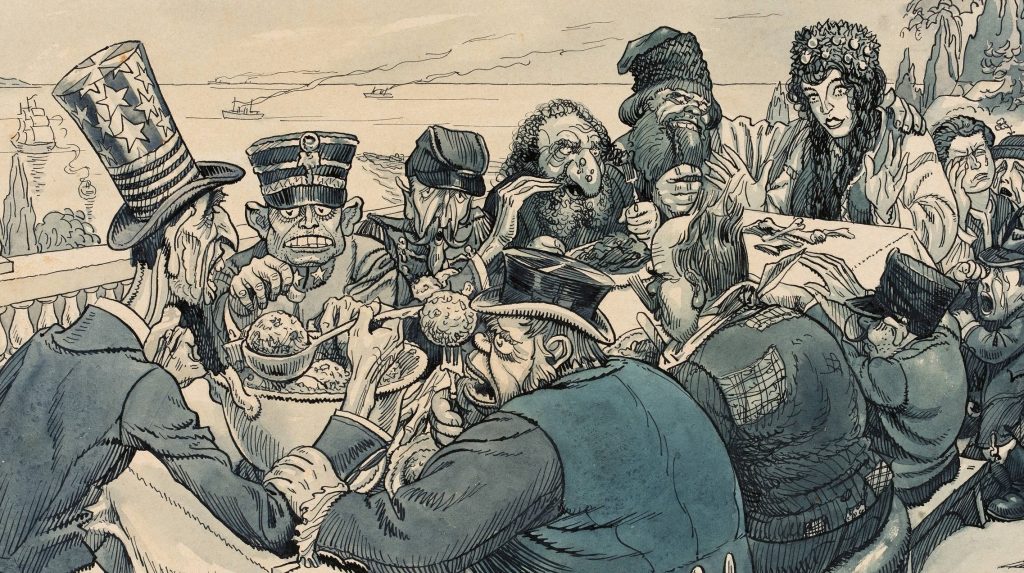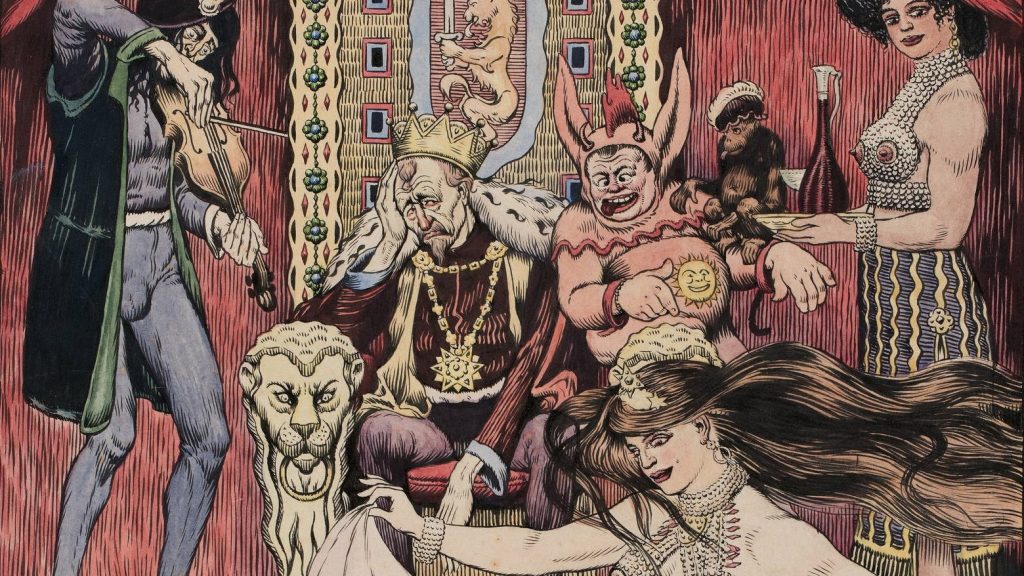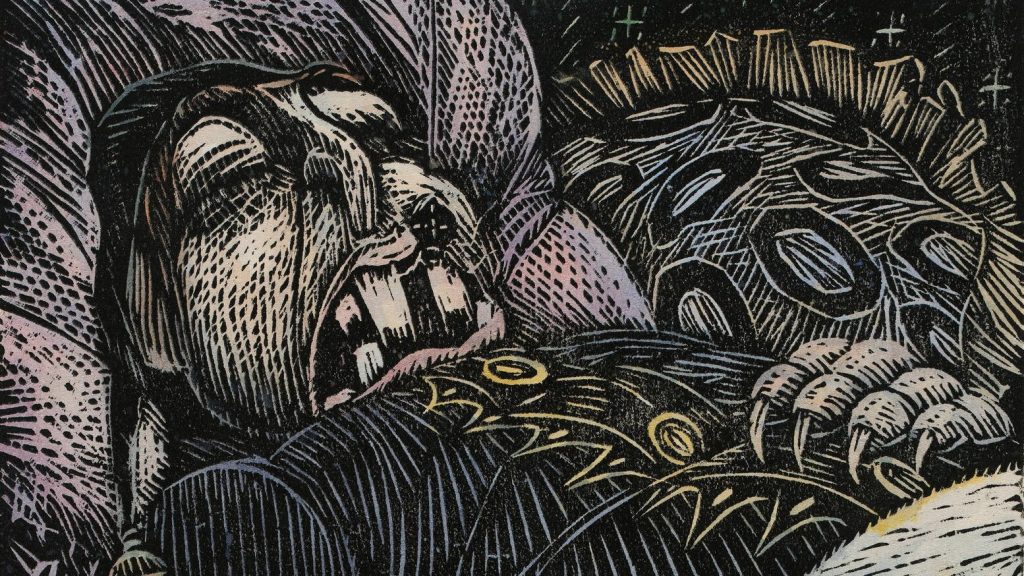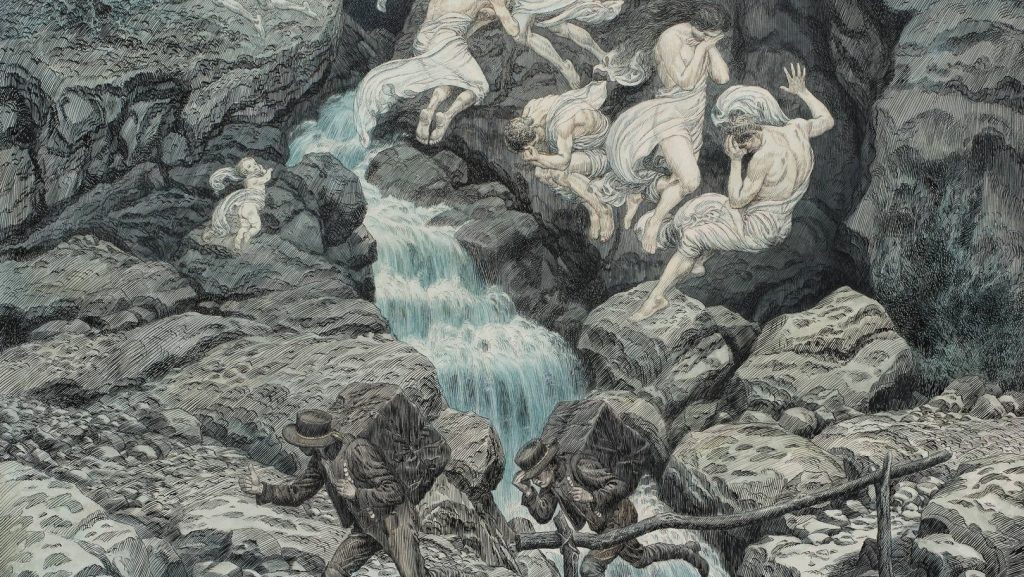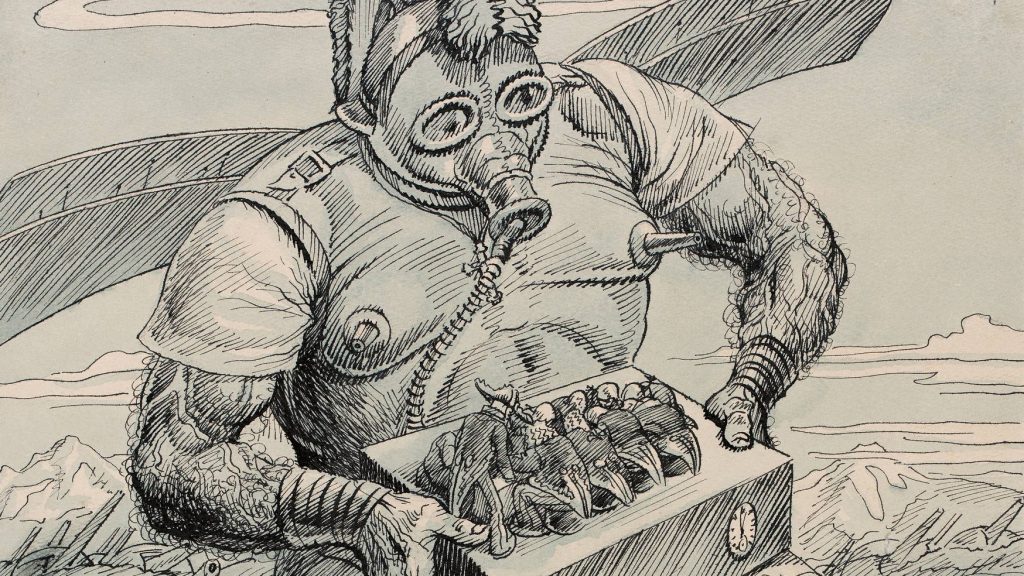Hinko Smrekar (Ljubljana, 1883–1942, Slovenian) was a pioneering drawing and print artist whose body of work complements the international study of satire and illustration in the first half of the 20th century. His satire reflected epochal geopolitical changes between 1914 and 1942. He introduced international secessionist illustration to new audiences. Despite anchored by granular events in his native Carniola (now central Slovenia) and the city of Ljubljana, his drawings constitute a universal commentary on the struggles of everyday life, folk traditions and the human nature. An advocate for freedom of thought, Smrekar pushed back against authoritarians, to great personal cost.
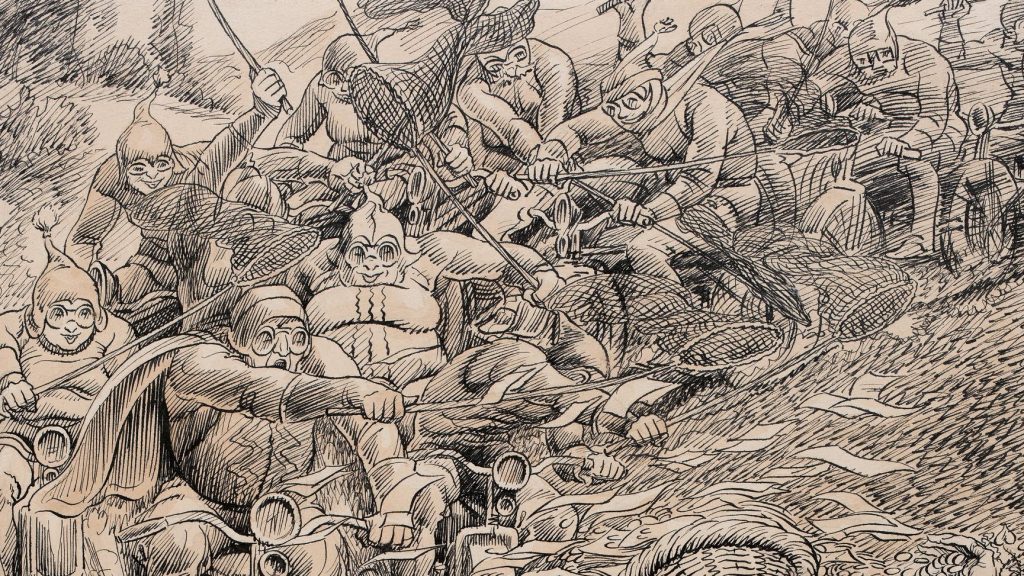
Introduction
Shaped by historical context
Smrekar was born in Ljubljana, the capitol city of Slovenian lands and part of Austria-Hungary. After World War I, the multi-ethnic state dissolved and two thirds of Slovenian territory, after a thousand years under Central-European German polities, became part of a Slavic Balkan kingdom of Yugoslavia. Northern lands stayed with Austria and the Littoral region went to Italy. Huge assimilation pressures in Fascist Italy and pre-Nazi Austria, centralized rule from Belgrade that after 1929 became openly dictatorial, economic crisis and general disappointment over the new reality fed Smrekar’s critical art.
Grounded in Secession, Slavic art and everyday life
In Vienna, he and other Slovenian artist formed Vesna art club, which gleaned its iconography from Slovenian traditions and national motifs. The group also looked to pan-Slavic Russian, Czech and Polish artists. Members of Vesna were younger contemporaries of Slovenian Impressionists and like them were influenced by Vienna and Munich Secession, especially by magazines Ver Sacrum and Jugend. They merged decorative style with visual storytelling and folk art. Smrekar also paid close attention to even the most mundane aspects of everyday life, from the newspapers’ crime section to price increases and child benefits.
Self-taught master and pioneer
Smrekar’s speciality were ink drawings – washed, watercoloured, combined with pastel and graphic prints – woodcuts, etchings, aquatints. Besides print, he also pioneered caricature, which until then was present only in folk art. He drew inspiration from international satirical newspapers, like Meggendorfer Blätter, Simplicissimus, Die Muskete, Neue Glühlichter, and Kikeriki!
Perception influenced by mental state
After 1919, Smrekar faced severe mental illness and years-long insomnia. He spent months in resorts and psychiatric hospitals, drawing harrowing images of different types of psychiatric patients. Seeing distortions everywhere, he turned his later subjects into stock characters and ghouls.
Freethinker who suffered the consequences
Smrekar often mocked authority and used humour as a weapon. He barely escaped punishment in 1914 for insulting the Austrian Kaiser Franz Jospeh I. He was then arrested and imprisoned in 1915 for mocking German soldiers. Later, he was subjected to frivolous lawsuits that he answered in sarcastic tones. In 1942, when Ljubljana was occupied by Mussolini’s Italy, he was arrested for possession of a Resistance newspaper and executed the next day without trial. Smrekar’s demise was in some ways inevitable. Despite his anti-Fascist stand, it is likely that he would not have escaped the Communist purges at the end of the War.
